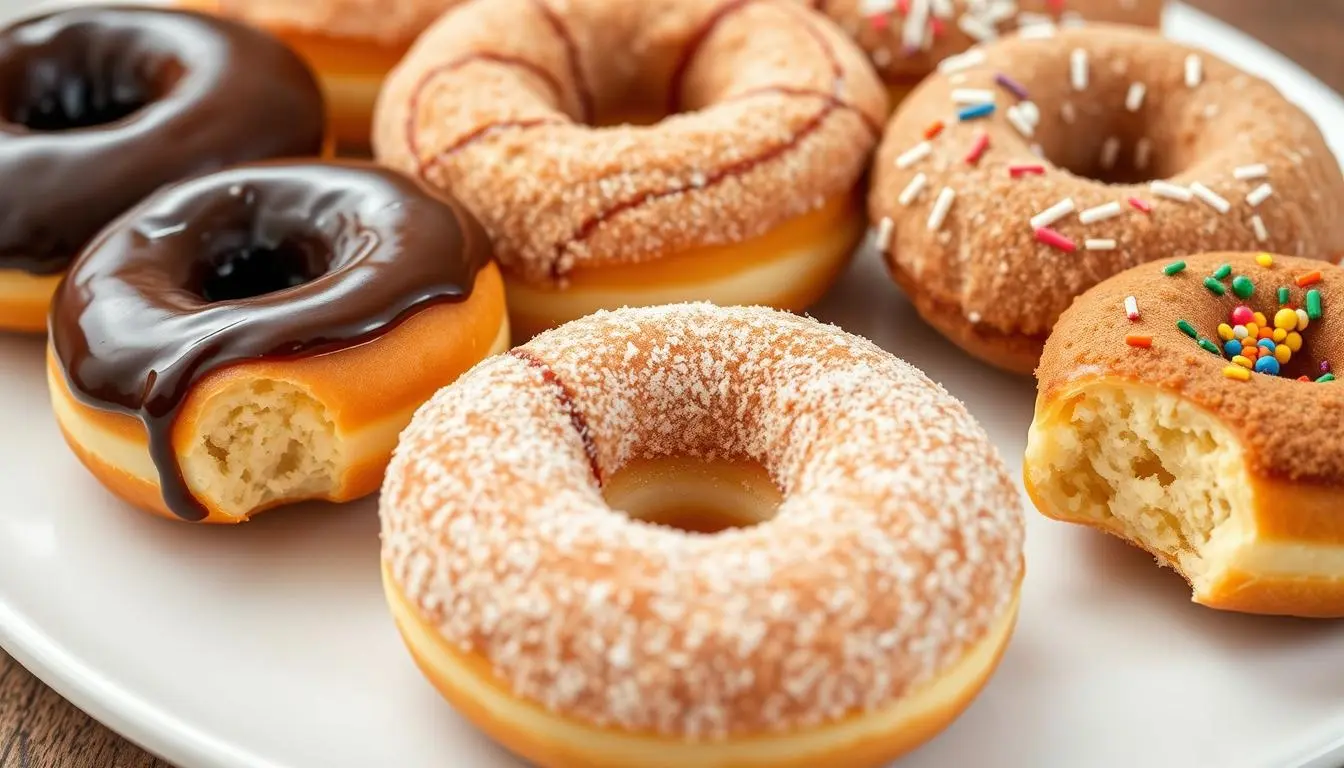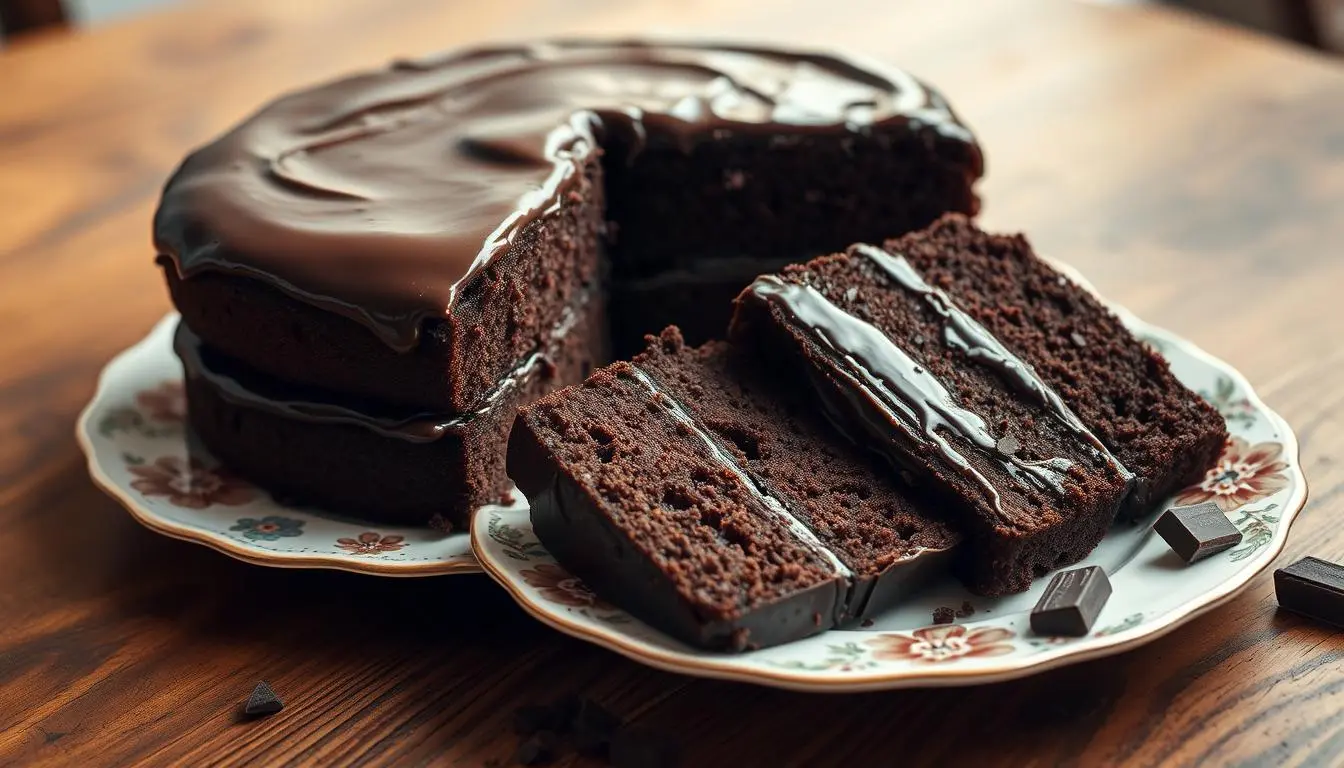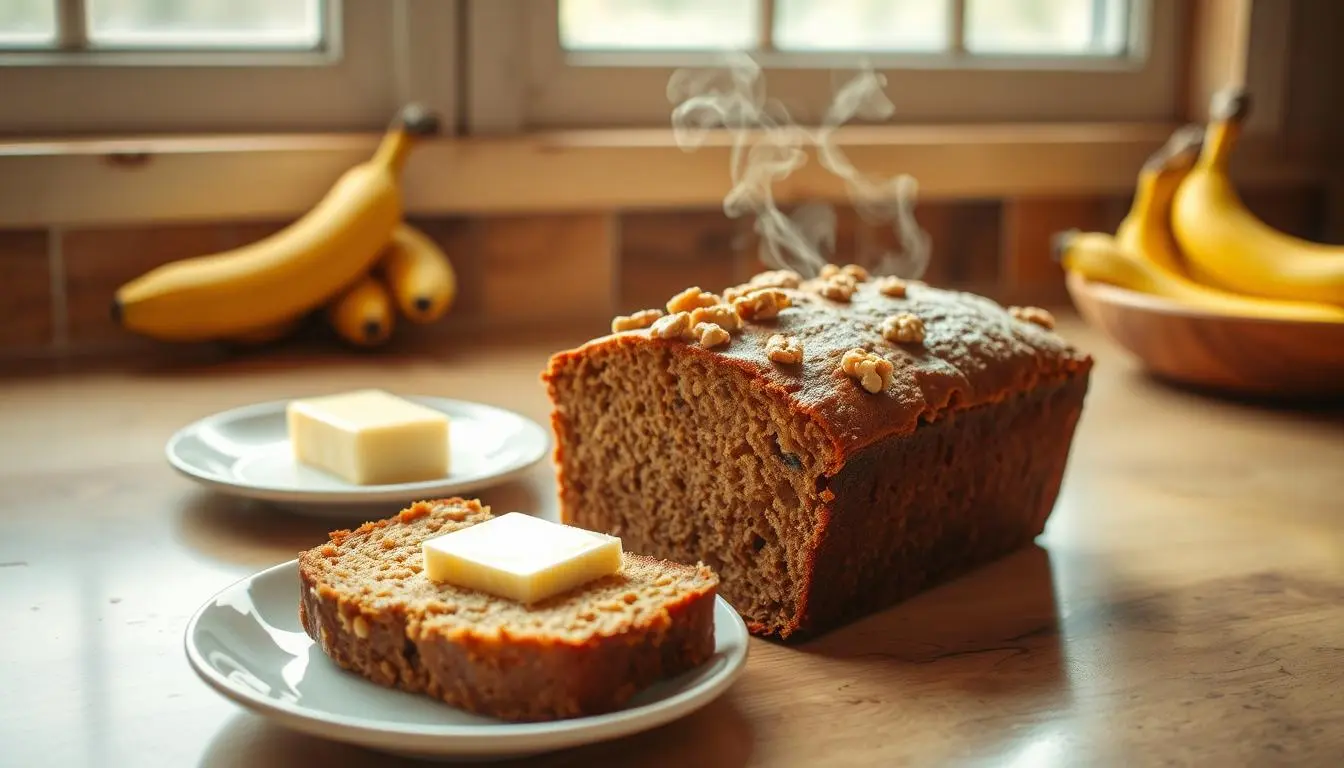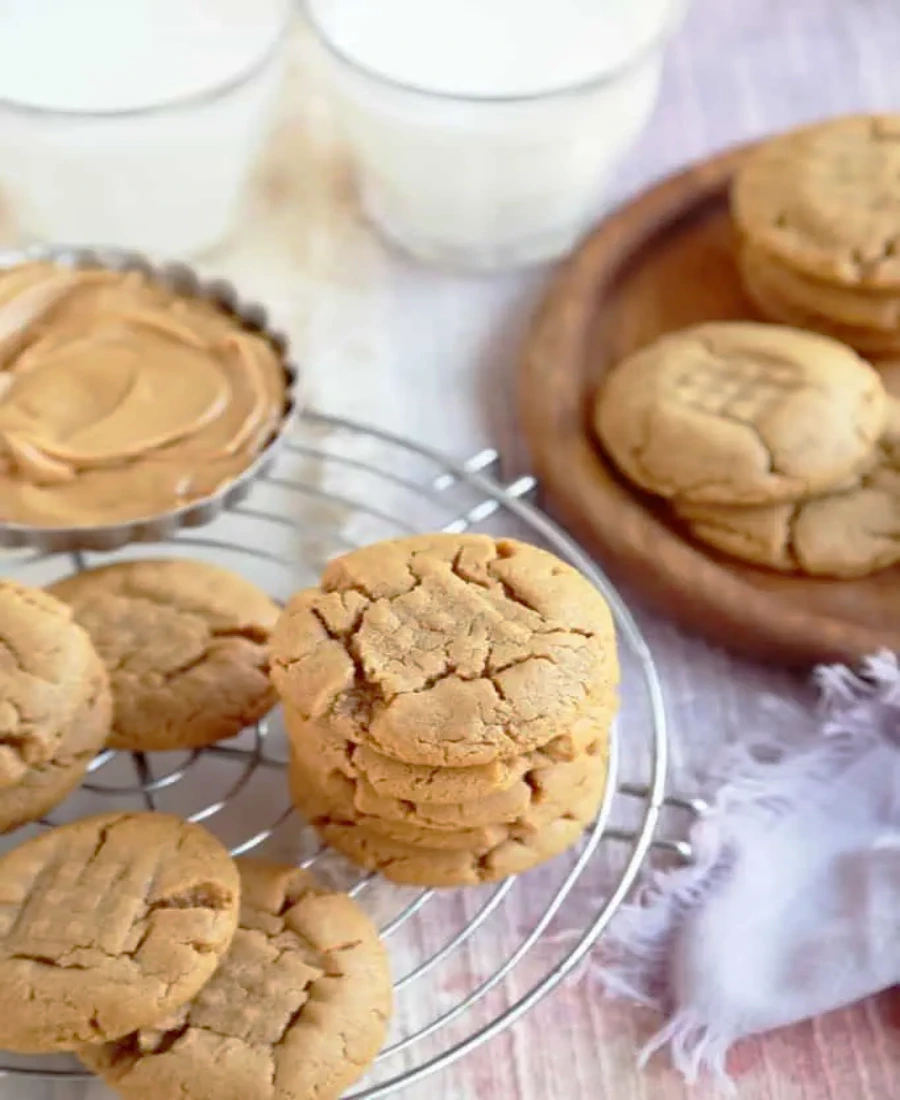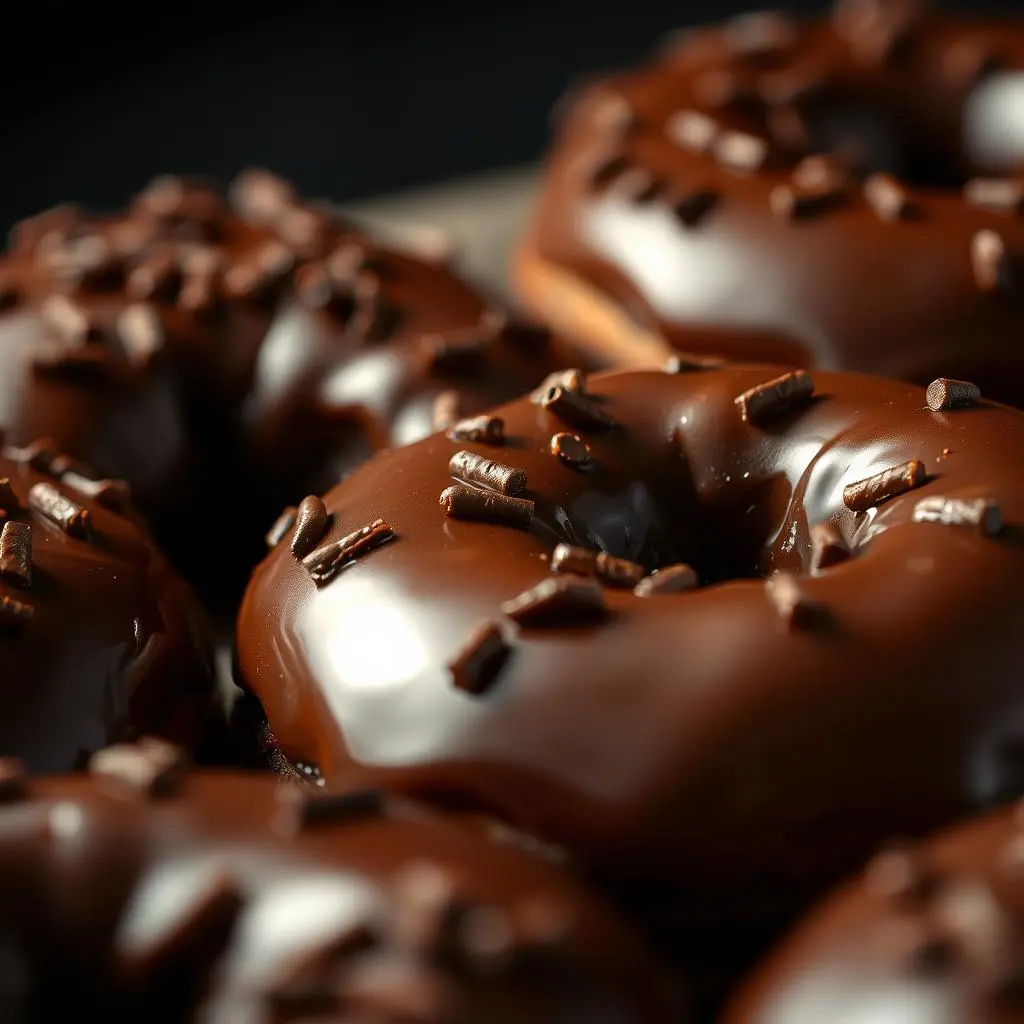
Key Takeaways
Why Choose a Baked Cake Donut Recipe over Fried Donuts
Health and nutrition advantages of baked donuts
Baking donuts cuts down on fat and calories since they’re not fried in oil. On average, baked donuts have 30–50 percent less fat than fried ones. This makes baked cake donut recipes a great choice for those looking for lower-fat options.
Baking also reduces harmful compounds formed by high-heat frying. You can use maple syrup instead of refined sugar and whole-wheat flour to increase fiber. This flexibility allows you to make healthier donuts that still taste amazing.
Texture and flavor differences: what to expect
Baked cake donuts have a denser, tender crumb. They aim for a moist, cakey interior, unlike the airy chew of yeast rings. The right mix of fat and leavening keeps them soft.
Flavors are more cake-like, perfect for adding extracts, spices, and mix-ins. Glazes and toppings add contrast in texture and taste. The crust might not be as crisp as fried donuts, but careful browning gives a nice chew.
Time, cleanup, and safety benefits for home bakers
Baking is quicker since you just pour batter and let the oven do the work. You avoid the hassle of constantly monitoring oil and dealing with splatters, making cleanup faster and simpler.
Home bakers face fewer safety risks since they’re away from hot oil. Baked cake donut recipes reduce burn hazards and lower fire risks at the stove. Plus, batches are easy to freeze and reheat, making them perfect for school events, potlucks, and meal prep.
| Comparison Point | Baked Cake Donut Recipe | Fried Donut |
|---|---|---|
| Typical fat reduction | 30–50% less fat; supports lower-fat donuts | Higher fat due to oil absorption |
| Health risks | Lower acrylamide and oxidation products | Higher acrylamide from high-temp frying |
| Texture | Moist, tender crumb; cake-like flavor | Airy or chewy with crisp exterior |
| Kitchen effort | Less hands-on; easy cleanup and batching | More monitoring; greasy cleanup |
| Safety | Lower burn and fire risk; safer for families | Higher risk from hot oil handling |
Understanding the Basics of Cake Donuts
Starting to bake? Knowing the basics is key. This guide covers the main points of cake donuts. It talks about ingredients and how to adjust them for better texture and rise. It’s useful whether you’re making them from scratch or using a cake mix.
How is a cake donut different from a yeast donut?
Cake donuts rely on baking powder or baking soda for a quick rise, giving them a tender crumb. In contrast, yeast donuts achieve their light, airy texture through yeast fermentation.
Cake donuts are denser and more crumbly, like a muffin. Yeast donuts are light and springy due to gluten development.
Flavor-wise, cake donuts rely on butter, sugar, eggs, and spices. Yeast donuts develop complex flavors over time through fermentation.
Common ingredients and their roles (flour, fat, leavening, liquids)
Flour gives structure. All-purpose flour works well for most recipes. Cake flour makes the crumb tender. The protein level affects the chew and strength.
Fat, like butter or oil, tenderizes the crumb and adds flavor. It coats flour proteins, reducing gluten for a softer texture.
Leavening agents like baking powder and baking soda create gas. Baking soda needs an acid to react. Too much leavening can make the crumb coarse.
Liquids and eggs play a key role in donut recipes by adding moisture, structure, and richness. 🥛🥚 Using milk or buttermilk helps boost the rise, while eggs act as a natural emulsifier, binding the ingredients together for a consistent, reliable result. 🍩✨
How ingredient ratios affect crumb and rise
More fat and liquid make the donut moist and tender. Too much liquid can make it sink or turn gummy. Balance is key for the right texture.
Leavener amount is crucial. Too much can create big holes and weak centers. Too little makes it heavy. Measure carefully and use weight measurements for consistency.
Sugar enhances browning and tenderness. Brown sugar adds moisture and depth. Balancing sugar, fat, and flour controls flavor and structure, whether baking from scratch or using a mix.
Essential Tools and Equipment for Baking Donuts
Before you start mixing batter, gather the right donut baking equipment. The right tools make work faster, reduce waste, and ensure even results. Here are some practical recommendations for bakeware, small tools, and kitchen tips for every time.
Recommended bakeware: donut pans and alternatives
Standard metal donut pans come in six- or twelve-cavity nonstick varieties. Brands like USA Pan, Wilton, and Nordic Ware offer durability and even browning. Silicone pans are flexible and easy to release donuts, but might not brown as evenly.
If you don’t have a donut pan, use a muffin tin with ring molds or create cavities by piping batter into muffin wells and hollowing centers after baking. You can also use invertible cores or small ring molds placed in muffin cups to mimic donut shapes.
Lightly prepare your pans with a baking spray designed for molds, or brush with melted butter and a thin dusting of flour. ✨ Avoid using too much grease, as excess can pool in the pan and cause the donuts to darken on the outside. 🍩
Must-have small tools: piping bags, cooling racks, mixers
Use a piping bag or a large resealable bag with the corner snipped for clean batter transfer into wells. This keeps shapes even and reduces spills compared with spooning.
Add a wire cooling rack to your setup to prevent soggy bottoms and let donuts cool evenly. Place a tray beneath for glazing drips.
Keep flexible spatulas for folding, measuring cups and a digital scale for accurate proportions, and an instant-read thermometer if you check oven hotspots.
Kitchen tips to get consistent results every time
Verify oven temperature with an oven thermometer and rotate pans halfway through baking for even color.For the best consistency, measure ingredients by weight whenever possible—this reduces variations between batches and ensures perfectly reliable results every time. ⚖️🍩
Use room-temperature eggs and dairy as directed so fats and liquids emulsify smoothly. Fill wells uniformly with a tablespoon or by weight to ensure donuts bake at the same rate and finish together.
Treat cake mix donuts like any baked good: mix until just combined to avoid a tough crumb. Keep your donut baking equipment clean and dry between batches to maintain performance and long life.
Perfect Ingredients for Fluffy Homemade Donuts
Choosing the right ingredients is key for texture, flavor, and rise. Follow this guide to pick the best flour, fat, and when to use a boxed mix. This way, you can make donuts that are both tasty and light.
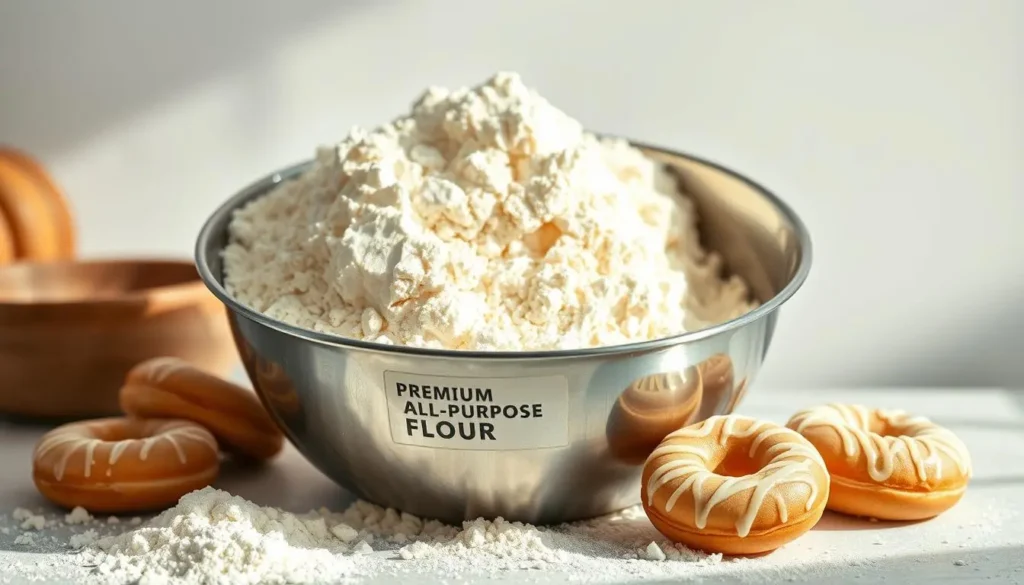
Selecting the right flour and sweeteners
Using the right flour makes a big difference in donut texture. 🍩 Cake flour creates soft, tender donuts, while all-purpose flour is versatile and gives a slightly firmer bite. For a healthier twist, a little whole-wheat pastry flour adds a nutty flavor—but use it sparingly to prevent a dense texture. 🌾
Granulated sugar helps with structure and browning. Brown sugar adds moisture and a caramel taste. For less sugar, try coconut sugar or reduce the amount by 10–15% and taste before baking.
Choosing fats: butter, oil, or shortening
Butter adds a rich flavor and creates a tender crumb in donuts. 🧈 When creamed with sugar, it traps air, giving the donuts a lighter rise. Using melted butter results in a denser texture but keeps that delicious buttery flavor strong. 🍩✨
Neutral oils like canola or sunflower make donuts moist and last longer. Shortening makes donuts extra tender and holds their shape well.
For a butter substitute, use oil in a 1:1 ratio. This keeps donuts moist but loses some butter flavor. If switching from solid fats to oil, adjust the batter’s consistency and liquid as needed.
How to use cake mix versus from-scratch ingredients
Cake mix donuts are quick and easy. Use a mix from Duncan Hines or Betty Crocker with eggs and oil. Add sour cream or milk for extra tenderness and vanilla or espresso for flavor.
From-scratch batters let you control sugar, fat, and flour. You can use whole-grain flours, adjust sweetness, and choose butter or oil. To upgrade a boxed mix into bakery-style donuts, add 2 large eggs, ⅓ to ½ cup of oil, and ¼ to ½ cup of sour cream or milk for extra richness and moisture. 🍩✨
| Ingredient | Effect on Donut | When to Use |
|---|---|---|
| Cake flour | Delicate, tender crumb; lighter texture | For ultra-soft cake donut recipe and delicate glazes |
| All-purpose flour | Balanced structure; reliable rise | Everyday batches and when you need stronger hold |
| Whole-wheat pastry flour | Nuttier flavor; denser crumb if used alone | Partial substitution up to 25–30% for depth |
| Granulated sugar | Structure and browning | Standard sweetness and texture |
| Brown sugar | Moisture and caramel notes | When you want richer flavor and softer interior |
| Butter | Flavor-forward; tender crumb; creaming lifts batter | Use for flavor focus and classic butter vs oil donuts test |
| Neutral oil | Extra moist; longer shelf life | Use for consistent moisture and ease of mixing |
| Shortening | Very tender, cake-like texture; good shaping | When you want firm edges and soft interior |
| Boxed cake mix | Fast, dependable results; less hands-on control | Quick cake mix donuts for busy mornings |
| From-scratch mix | Customizable flavor, sugar, and fat | When you want total control over ingredients |
cake donut recipe
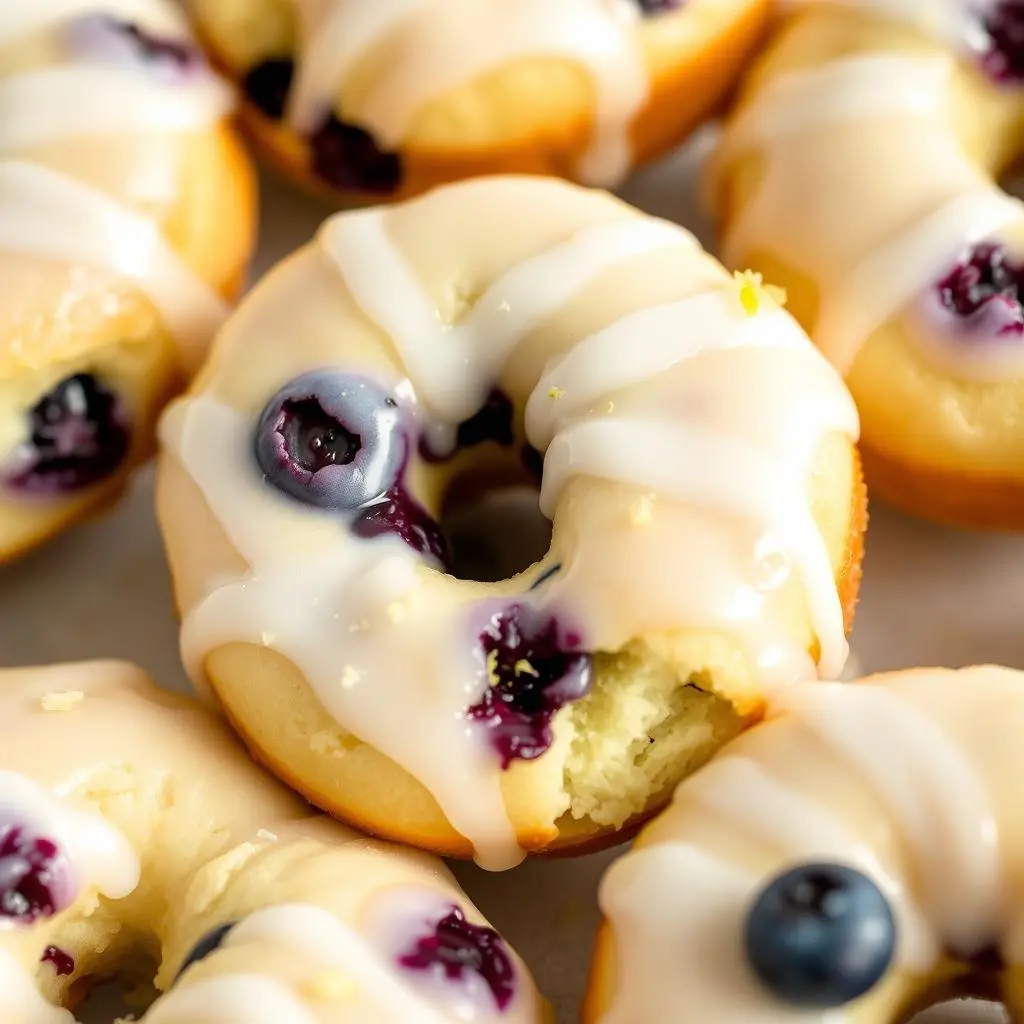
Whether you like a classic baked cake donut recipe or a quick cake mix donut, we’ve got you covered. Below, you’ll find the exact weights and smart swaps for your donut batter. This ensures a tender crumb and even rise.
Full ingredient list for the base cake donut batter
For all-purpose flour, use 240 g (2 cups). For cake flour, use 220 g.
Granulated sugar is 100 g (1/2 cup). You can replace half with brown sugar for a richer taste.
Baking powder is 12 g (1 tablespoon). Fine salt is 4 g (3/4 teaspoon).
For extra flavor, mix in 2 g of ground cinnamon or ½ teaspoon of another warm spice like nutmeg, cardamom, or allspice. 🍩✨ This simple addition enhances aroma and gives your donuts a cozy, bakery-style taste.
Use 2 large eggs, at room temperature.
Use 180 ml (¾ cup) of whole milk or buttermilk in the recipe. 🥛 If you choose buttermilk, adjust the leavening by reducing the baking powder by ½ teaspoon and adding ½ teaspoon of baking soda for the perfect rise. 🍩✨
Melt 60 g (1/4 cup) unsalted butter for the melted-butter method. Or, use 56 g (1/4 cup) softened butter for creaming. Canola oil works the same for a softer crumb.
Add 1 teaspoon vanilla extract.
Optional: Add 60 g (1/4 cup) sour cream or plain Greek yogurt for extra moisture and tenderness.
Step-by-step mixing instructions for light, tender donuts
Preheat your oven and prepare donut pans with a light spray or a thin brush of butter. Always whisk the dry ingredients together to ensure the leavening agents and spices are evenly distributed, giving your donuts a consistent rise and balanced flavor in every bite. 🍩✨
If you use the creaming method, beat softened butter with sugar until pale and airy. Add eggs one at a time, then stir in vanilla.
Alternate adding dry ingredients and milk, beginning and ending with dry. Mix gently and stop when streaks disappear.
For the melted-butter or oil method, whisk eggs, milk, melted butter, and vanilla.Pour the wet ingredients into the dry ingredients and stir just until combined. 🍩 This helps maintain a tender, soft crumb in your donuts.
Transfer the donut batter into a piping bag or a large resealable bag, then cut a corner for easy and precise control while filling your donut molds. 🍩✨ Pipe evenly into wells, filling about two-thirds to avoid puffing over. Level any high spots and tap the pan to release trapped air.
Bake as directed in the next section and cool donuts briefly in the pan before turning them onto a wire rack to finish cooling. Cool fully before glazing to prevent soggy tops.
Common mistakes to avoid when preparing the batter
Do not overmix. Excess stirring develops gluten and yields dense, tough results rather than the soft texture you expect from a baked cake donut recipe.
Avoid under- or overfilling wells. Overfilled wells produce merged or misshapen rings. Underfilled wells give thin, flat rings with poor structure.
Check your leavening. Using old baking powder or the wrong amounts can prevent your donuts from rising properly. 🥄 To test freshness, mix a pinch with hot water—it should fizz immediately if still active. 🍩✨
Never skip pan prep or rely on a damaged nonstick surface. A lightly greased pan and brief cooling in the pan help donuts release cleanly.
| Step | Action | Why it matters |
|---|---|---|
| 1 | Weigh and sift dry ingredients | Ensures even rise and avoids pockets of baking powder |
| 2 | Cream or whisk wet ingredients correctly | Controls texture: creaming traps air, melted butter gives tender crumb |
| 3 | Combine wet and dry gently | Prevents gluten overdevelopment and keeps donuts light |
| 4 | Fill pans consistently | Produces even rings that bake uniformly |
| 5 | Cool before glazing | Maintains glaze texture and avoids sogginess |
Step-by-Step Baking Method for Soft, Fluffy Donuts
Begin with thorough preparation for consistent results. Preheat your oven and prepare the pans for even baking. Small steps now prevent big issues later when baking cake donuts.
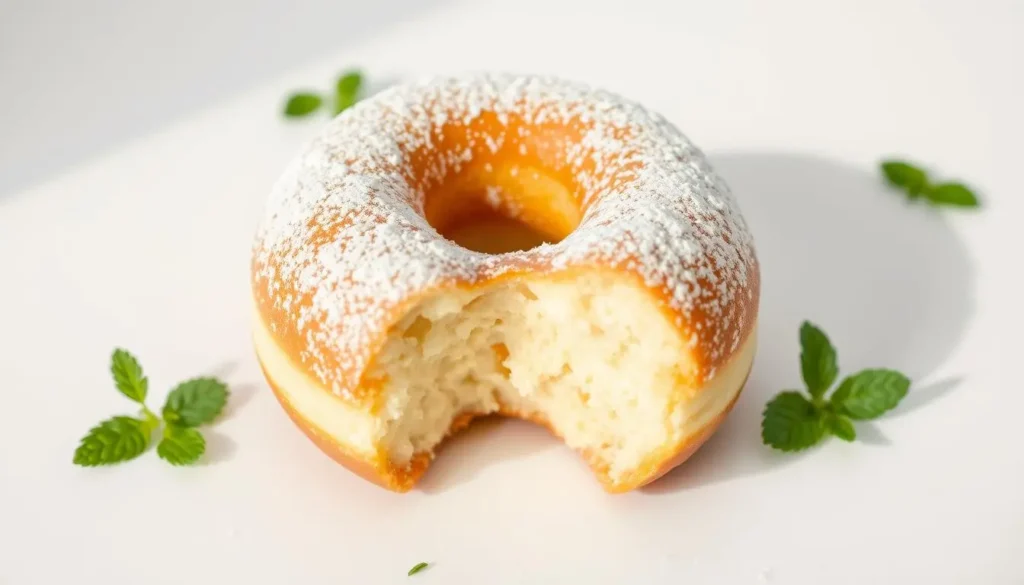
Preparing pans and transferring batter is crucial. Grease metal pans with baking spray or softened butter and dust with flour. For silicone molds, use parchment inserts or a light spray to keep shapes intact.
Fill wells evenly to avoid uneven rise. Use a piping bag or an ice cream scoop for consistent portions. Tap pans gently on the counter to release trapped air. If you see large bubbles, pop them with a toothpick before baking.
Preparing pans and batter transfer techniques
Work quickly once batter is mixed so leavening remains active. Hold the piping bag close to each well and fill about two-thirds full. For larger, filled donuts reduce fill slightly to leave room for expansion.
Let batter rest for a minute if it seems very bubbly. That short pause helps surface tension settle and lowers the chance of air pockets. Place pans on a middle rack for the most even heat.
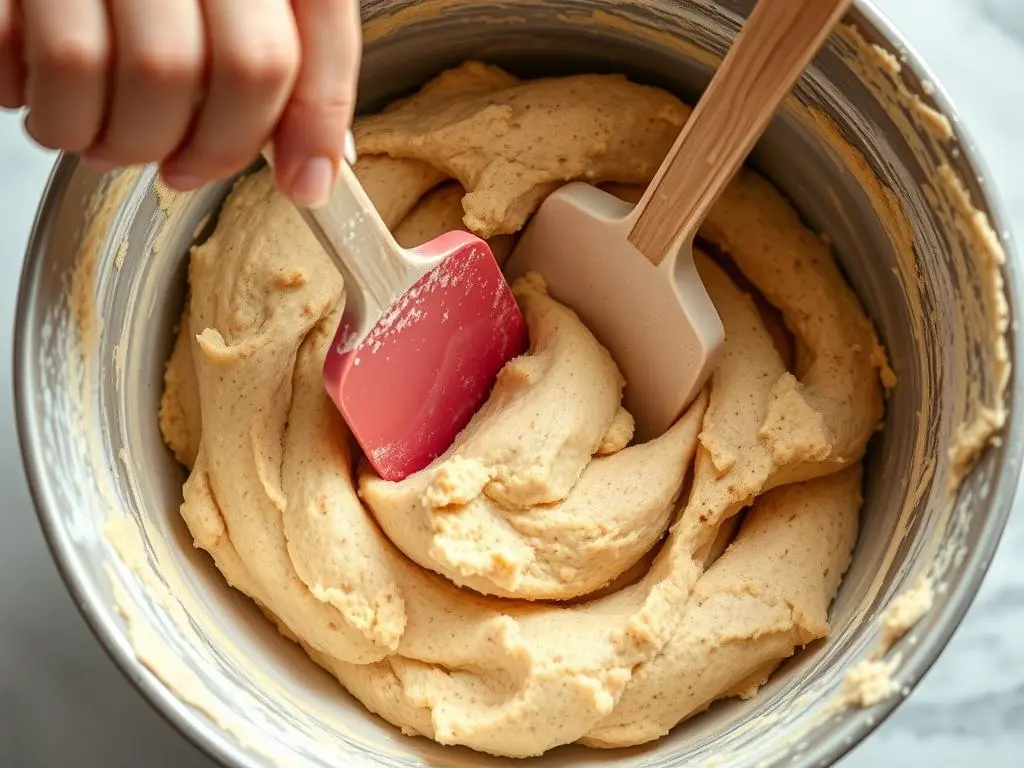
Optimal oven temperatures and baking times
Set the donut oven temperature to the recipe’s recommendation. Most cake donut recipes call for 350°F, though some benefit from 325°F for a gentler rise. Convection ovens typically run hot; lower the setting by about 25°F and shorten cake donut recipe baking times slightly.
Use these general bake windows as a guide: small cake donuts at 325–350°F for roughly 8–12 minutes. Larger or filled donuts may require extra time. Watch for light golden edges and centers that feel set when touched.
How to test doneness without drying out your donuts
Check donut doneness with the spring-back test: gently press the top of the donut—if it bounces back, it’s likely done. 🍩 For extra assurance, insert a toothpick into the thickest part; it should come out clean or with a few moist crumbs, never wet batter. ✅
To avoid overbaking, remove the donuts from the oven a minute or two early if you’re unsure. 🍩 They will firm up as they cool, ensuring a tender, perfectly textured treat.Cool in the pan 2–3 minutes, then transfer to a wire rack to keep bottoms from becoming soggy.
Follow these steps to nail donut oven temperature, cake donut recipe baking times, and transfer technique. With these tips, your next batch of donuts will have a soft, tender crumb and deliver consistent, reliable results every time. 🍩✨
Creative Glazes, Fillings, and Toppings
Transform a basic cake into extraordinary donuts by adding creative glazes, fillings, and toppings. 🍩✨ Perfect for homemade treats that wow family and friends! Small changes can make a big difference. Here are some easy ideas to try today.
Classic vanilla and chocolate glazes
To make a smooth vanilla glaze, mix powdered sugar, milk or cream, and vanilla extract. For a tangy twist, use buttermilk. The glaze should be pourable to coat donuts evenly. Chill it briefly to set.
To make a rich chocolate glaze, combine powdered sugar, cocoa powder, milk, and corn syrup. 🍫 Heat gently while stirring until the mixture is smooth and glossy, perfect for drizzling over donuts. Then, dip or spoon it over donuts. Let excess drip off before serving.
Flavor variations
For a sweet maple glaze, combine real maple syrup, powdered sugar, and warm water or milk. 🍁 Add a touch of cinnamon or vanilla for extra flavor.
For cinnamon sugar donuts, brush the donuts with melted butter and then toss them in a mixture of sugar and cinnamon for a classic, cozy coating. 🍩✨
Fruit glazes start with pureed fruit like strawberry or blueberry. Simmer it with sugar until reduced, then strain and mix with powdered sugar. Add lemon zest to balance sweetness.
Filling ideas and technique
Custard and pastry cream are great for filled donuts. Cook a basic pastry cream, cool it, then pipe it into donuts. Use high-quality jam for smooth fillings.
Try fillings like lemon curd, Nutella, or mascarpone cream. Chill them until firm. Use a long tip or injector to fill donuts without bursting.
Practical tips for success
- Cool donuts completely before glazing to prevent melting or sliding.
- Match glaze thickness to the donut: thin glazes soak in, thick glazes sit on top.
- Balance sweet and acidic notes so glazes and fillings taste bright, not cloying.
- For cake mix donuts toppings, keep options simple: chopped nuts, toasted coconut, and sprinkles add texture without extra prep.
Adapting Recipes: Cake Mix Donuts and Dietary Alternatives
You can turn classic donut recipes into quick, flexible options that fit your diet and schedule. Start with a single-box formula and then tweak the texture and flavor with simple swaps. This guide helps you make dependable cake mix donuts, shape gluten-free cake donut recipe attempts, and craft a dairy-free baked cake donut recipe when needed.
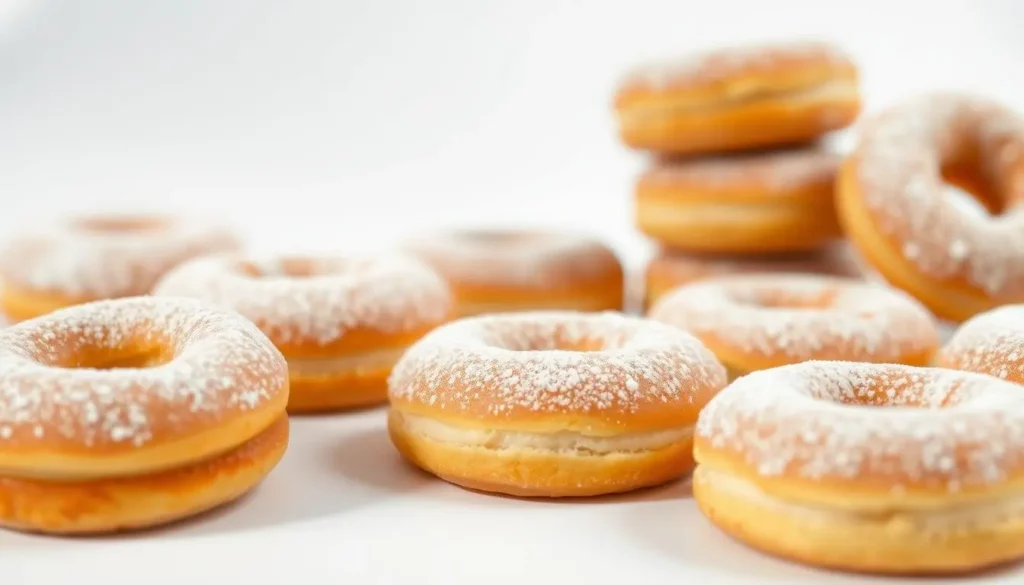
Quick donut recipe formula: mix one 15.25 oz cake mix with 2 large eggs, 1/3 cup neutral oil, and 1/2 cup sour cream or plain yogurt. For piping-thick batter, add 1 to 2 tablespoons milk if needed. Spoon or pipe the batter into a standard 6-cavity donut pan and bake for 10–12 minutes at 350°F (175°C). 🍩 To vary flavors and speed up prep, try chocolate, yellow, or spice cake mixes for delicious, quick donuts every time.
To improve boxed mix results, fold in 2 tablespoons sour cream or Greek yogurt for tenderness and 1 teaspoon vanilla for depth. If batter feels too stiff, add a tablespoon of milk at a time until it holds a smooth ribbon for piping. These tweaks yield softer crumb and better rise with little extra effort.
For a gluten-free cake donut recipe, use a cup-for-cup blend from Bob’s Red Mill or King Arthurr. Expect slightly different crumb; chilling the batter 15 minutes before piping can reduce crumbling and improve shape.
To make a dairy-free baked cake donut recipe, replace cow’s milk with almond, oat, or soy milk and swap butter for vegan butter or neutral oil. Use dairy-free yogurt or coconut-based sour cream in place of regular sour cream to keep moisture and tenderness intact.
If you need an eggless quick donut recipe, try 1/4 cup unsweetened applesauce or mashed banana per egg, or use a commercial egg replacer according to package directions. Note that applesauce adds humidity and a denser crumb, while banana gives a mild fruit note to the donuts.
High-altitude adjustments: lower baking powder by 1/8 to 1/4 teaspoon, raise liquids by 1 to 2 tablespoons, and reduce oven temperature by 15–25°F. Watch bake times closely; you may need a slightly shorter bake time to avoid dry donuts.
Account for climate and ovens. In humid kitchens, flour absorbs extra moisture so trim added liquid slightly. Use an oven thermometer to verify temperature and test a small batch when changing pans or recipes to confirm timing and doneness.
| Adaptation | Common Swap | Ratio or Tip | Texture Note |
|---|---|---|---|
| Speedy boxed mix | One box + eggs, oil, sour cream | 1 box : 2 eggs : 1/3 cup oil : 1/2 cup sour cream | Light, consistent crumb; fast bake |
| Gluten-free | Bob’s Red Mill or King Arthur blend | Cup-for-cup blend; add 1/2 tsp xanthan gum per cup if missing | More crumbly; chill batter to firm up |
| Dairy-free | Almond/oat/soy milk, vegan butter | 1:1 swap for milk/butter; use dairy-free yogurt | Moist but slightly different mouthfeel |
| Eggless | Applesauce, mashed banana, commercial replacer | 1/4 cup applesauce per egg; test for rise | Denser, moister crumb; flavor shifts possible |
| High altitude | Adjust leavening and liquids | Reduce baking powder 1/8–1/4 tsp; add 1–2 tbsp liquid; -15–25°F oven | Better structure and even bake |
Troubleshooting and Tips for Consistent Results
When your baked cake donuts don’t turn out as expected, quick fixes and smart storage make a big difference. Use the guidance below to solve texture issues, keep donuts fresh, and plan batch-baking so you spend less time rescuing and more time enjoying.
Fixes for dense, dry, or gummy donuts
Dense donuts often come from overmixing or too much flour. Measure flour by weight and stir only until combined. Check the age of your baking powder; stale leavening makes cakes heavy.
If donuts taste dry, cut a minute from the bake time or add a touch more fat or liquid. A spoonful of sour cream or yogurt in the batter boosts tenderness. For finished donuts, brush with simple syrup before glazing to lock in moisture.
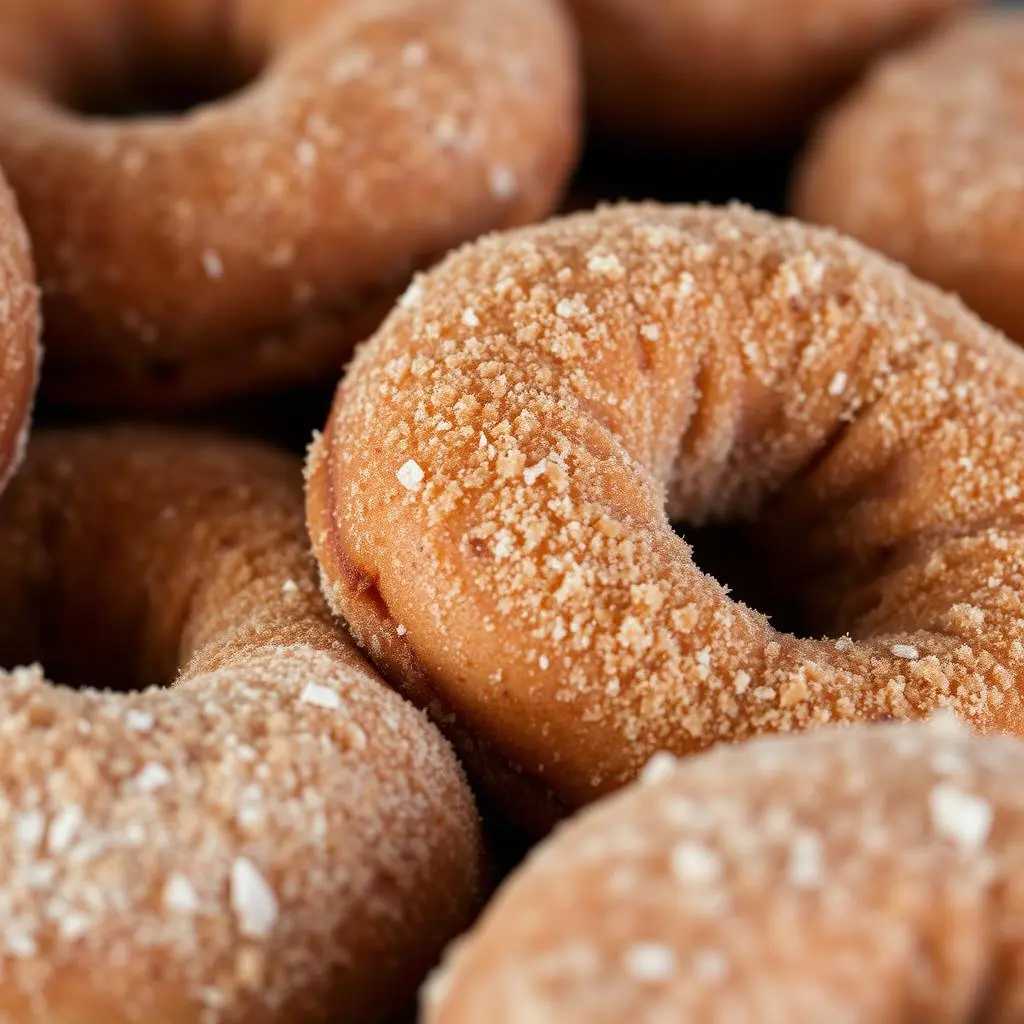
Gummy centers signal low oven heat, too much liquid, or underbaking. Verify oven temperature with an oven thermometer and test centers with a toothpick.If the donuts are underbaked, return them to the oven in short intervals to finish cooking, which helps avoid drying out the crumb and keeps them tender. 🍩✨
Best Ways to Store and Reheat Donuts to Keep Them Fresh 🍩✨
For short-term keeping, place glazed donuts in an airtight container at room temperature for 1–2 days. Unglazed or sugar-coated donuts last a bit longer without losing texture.
Donuts with perishable fillings, such as custard or cream, belong in the refrigerator and should be eaten within 2–3 days. Wrap them tightly to reduce drying from cold air.
To revive softness, warm donuts in a 300°F oven for 5–8 minutes. For a single serving, a quick 10–15 second burst in the microwave works perfectly. ⚡🍩 Be sure to watch closely to avoid overheating, which can dry out the donut.
Batch-baking tips and freezing instructions
When batch-baking donuts, make sure to cool plain donuts completely before freezing to preserve their freshness and texture. ❄️🍩 Freeze on a single layer until firm, then stack with parchment between layers and seal in freezer bags.
Baked donuts freeze well for 2–3 months if wrapped tightly and labeled with date and flavor. Thaw at room temperature or warm gently in a low oven. For best finish, glaze after thawing.
You can freeze batters in portioned containers, but baked storage keeps texture more consistent. These cake mix donuts tips help busy bakers save time while preserving quality.
- Use an oven thermometer to avoid underbaking and gummy centers.
- Weigh flour to prevent dense crumb from packing too much flour.
- Brush with simple syrup to fix dry donuts before glazing.
- Freeze cooled donuts flat, then stack with parchment to prevent sticking.
Keep cake donut recipe troubleshooting simple: small adjustments to mixing, heat, and storage will yield steady results. Learn how to store donuts and freeze donuts the right way and your next batch will taste like they came straight from the oven.
Conclusion
You now have a clear path to a reliable cake donut recipe. It balances health, convenience, and flavor control. By choosing a baked cake donut recipe, you cut down on oil and cleanup.
Follow the core steps for a tender crumb: measure precisely, mix gently, use the right leavening, and bake at the right temperature.
Use this homemade donut guide to try new glazes, fillings, and adaptations. Cake mix donuts offer a quick shortcut. You can also make gluten-free or dairy-free versions by swapping flours and milks.
Small adjustments to fat, liquid, and baking time can enhance both the texture and flavor of your donuts. 🍩✨ This allows you to customize the recipe and make it truly your own.
When you take warm donuts out of the oven, the aroma and soft crumb are irresistible. Share them with family or bring them to a neighborhood gathering. Bookmark this guide, try the recipe, and refine your perfect baked cake donut recipe.
Enjoy the process and the smiles your homemade treats will bring.
FAQ
How does a cake donut differ from a yeast donut? 🍩
Cake donuts use baking powder or baking soda for a soft, cake-like texture. Yeast donuts, on the other hand, use fermentation for a light, airy feel. Cake donuts are denser, while yeast donuts are lighter.
Can you bake donuts using a boxed cake mix?
Yes, you can. Mix the cake mix with wet ingredients like eggs, oil, and sour cream. Add vanilla or espresso for extra flavor. Duncan Hines and Betty Crocker work well.
Are baked cake donuts healthier than fried donuts?
Yes, they are. Baking donuts cuts down on calories and fat compared to frying. It also reduces harmful compounds from hot oil. You can control ingredients better, like using whole-grain flours.
What pan should I use to bake donuts, and are there good alternatives?
Use a nonstick donut pan or silicone molds for even baking. You can also use a muffin tin with a small core or ring molds. Piping batter into muffin wells works too.
How do I transfer batter into the donut pan without making a mess?
Use a piping bag or a plastic bag with a corner cut off. A cookie scoop or ice cream scoop also works. Tap the pan to remove air bubbles before baking.
What’s the ideal oven temperature and bake time for cake donuts?
Bake at 325–350°F. Small donuts bake for 8–12 minutes, while larger ones take longer. Convection baking reduces temperature and time. Look for golden edges and a springy center.
How can I test doneness without drying out the donuts?
Press the top gently; it should spring back. Use a toothpick; it should come out clean. If unsure, bake for a minute less.
What are common batter mistakes that make donuts dense or gummy?
Overmixing and using too much flour make donuts dense. Gummy centers mean underbaking or too much liquid. Check your oven temperature with a thermometer.
Can I substitute ingredients for dietary needs—gluten-free, dairy-free, or egg-free?
Yes. Use gluten-free blends and xanthan gum if needed. For dairy-free, swap plant milk and vegan butter. Egg substitutes like applesauce work but may change texture.
How do I make classic glazes and apply them for a smooth finish?
Whisk powdered sugar with milk and vanilla for vanilla glaze. For chocolate, use cocoa and milk. Chill donuts before glazing to set.
What’s the best way to fill donuts with custard or jam?
Cool donuts, then use a piping bag or filling tool. Insert the tip and squeeze gently. Strain jam or warm it slightly for smooth piping.
How should I store and reheat baked donuts so they stay fresh?
Store plain or sugar-coated donuts in an airtight container to maintain freshness. 🍩 Filled donuts should be refrigerated.
To serve, warm donuts in a 300°F oven or give them a few seconds in the microwave. ⚡ Be careful to avoid overheating, which can dry them out.
Can I freeze baked donuts or batter, and what’s the best method?
For longer storage, freeze donuts in a single layer first, then transfer them to freezer-safe bags. ❄️ They can last 2–3 months.
When ready to enjoy, thaw at room temperature or warm in a low oven. You can also freeze donut batter in portioned bags for easy, fresh-baked donuts later. 🍩✨
How do I adjust recipes for high altitude or humid climates?
At high altitude, reduce baking powder and increase liquid. Lower the oven temperature. In humid climates, measure flour by weight and adjust dry ingredients. Test a small batch when making big changes.
Is cake flour better than all-purpose flour for baked donuts?
Cake flour makes donuts more tender. All-purpose flour is versatile. You can mix both for a balance. Use whole-wheat pastry flour for whole-grain options.

